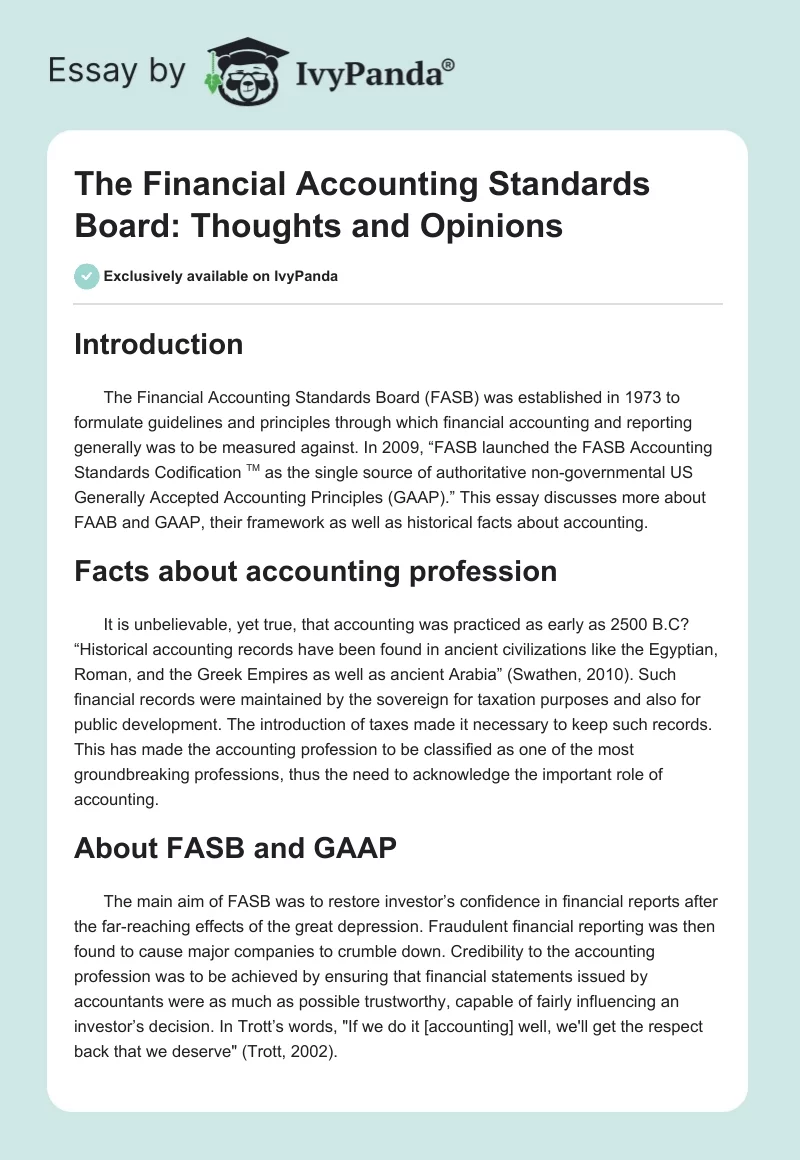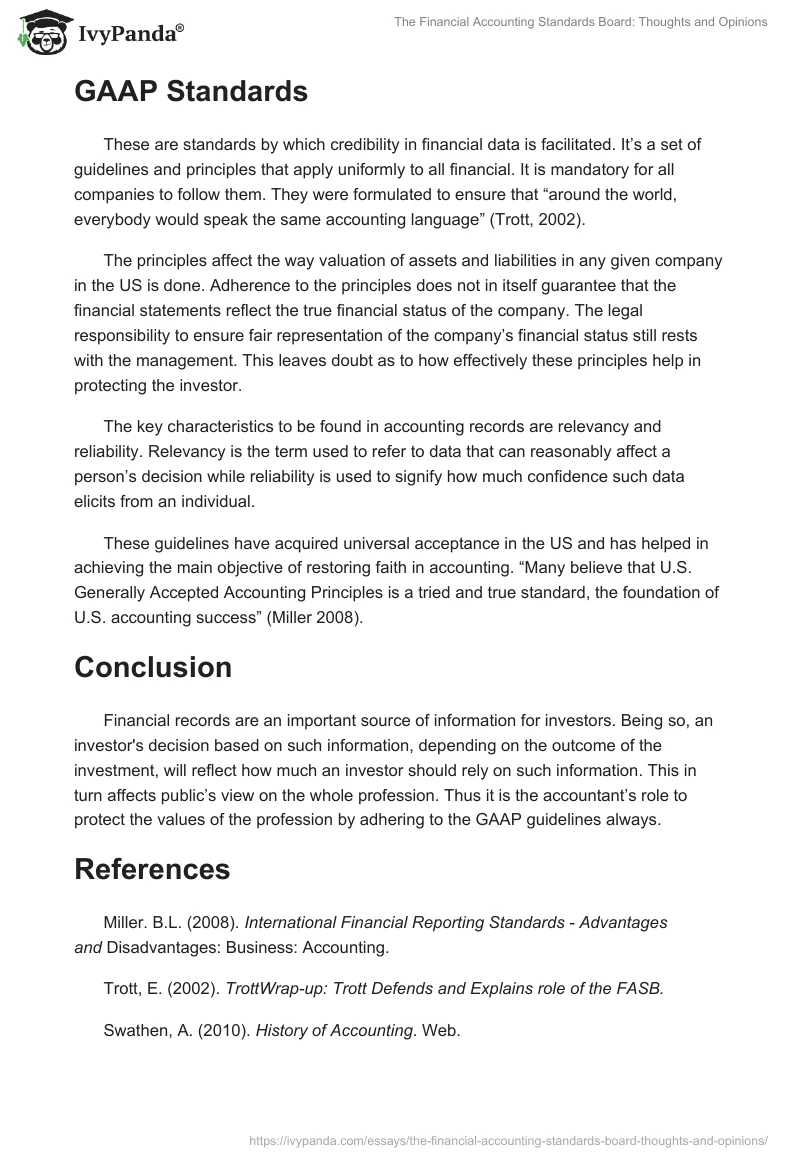Introduction
The Financial Accounting Standards Board (FASB) was established in 1973 to formulate guidelines and principles through which financial accounting and reporting generally was to be measured against. In 2009, “FASB launched the FASB Accounting Standards Codification TM as the single source of authoritative non-governmental US Generally Accepted Accounting Principles (GAAP).” This essay discusses more about FAAB and GAAP, their framework as well as historical facts about accounting.
Facts about accounting profession
It is unbelievable, yet true, that accounting was practiced as early as 2500 B.C? “Historical accounting records have been found in ancient civilizations like the Egyptian, Roman, and the Greek Empires as well as ancient Arabia” (Swathen, 2010). Such financial records were maintained by the sovereign for taxation purposes and also for public development. The introduction of taxes made it necessary to keep such records. This has made the accounting profession to be classified as one of the most groundbreaking professions, thus the need to acknowledge the important role of accounting.
About FASB and GAAP
The main aim of FASB was to restore investor’s confidence in financial reports after the far-reaching effects of the great depression. Fraudulent financial reporting was then found to cause major companies to crumble down. Credibility to the accounting profession was to be achieved by ensuring that financial statements issued by accountants were as much as possible trustworthy, capable of fairly influencing an investor’s decision. In Trott’s words, “If we do it [accounting] well, we’ll get the respect back that we deserve” (Trott, 2002).
GAAP Standards
These are standards by which credibility in financial data is facilitated. It’s a set of guidelines and principles that apply uniformly to all financial. It is mandatory for all companies to follow them. They were formulated to ensure that “around the world, everybody would speak the same accounting language” (Trott, 2002).
The principles affect the way valuation of assets and liabilities in any given company in the US is done. Adherence to the principles does not in itself guarantee that the financial statements reflect the true financial status of the company. The legal responsibility to ensure fair representation of the company’s financial status still rests with the management. This leaves doubt as to how effectively these principles help in protecting the investor.
The key characteristics to be found in accounting records are relevancy and reliability. Relevancy is the term used to refer to data that can reasonably affect a person’s decision while reliability is used to signify how much confidence such data elicits from an individual.
These guidelines have acquired universal acceptance in the US and has helped in achieving the main objective of restoring faith in accounting. “Many believe that U.S. Generally Accepted Accounting Principles is a tried and true standard, the foundation of U.S. accounting success” (Miller 2008).
Conclusion
Financial records are an important source of information for investors. Being so, an investor’s decision based on such information, depending on the outcome of the investment, will reflect how much an investor should rely on such information. This in turn affects public’s view on the whole profession. Thus it is the accountant’s role to protect the values of the profession by adhering to the GAAP guidelines always.
References
Miller. B.L. (2008). International Financial Reporting Standards – Advantages and Disadvantages: Business: Accounting.
Trott, E. (2002). TrottWrap-up: Trott Defends and Explains role of the FASB.
Swathen, A. (2010). History of Accounting. Web.


